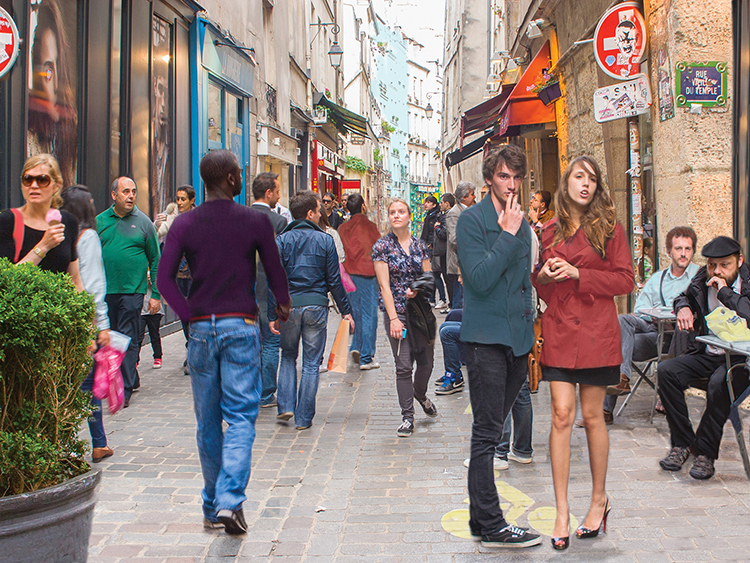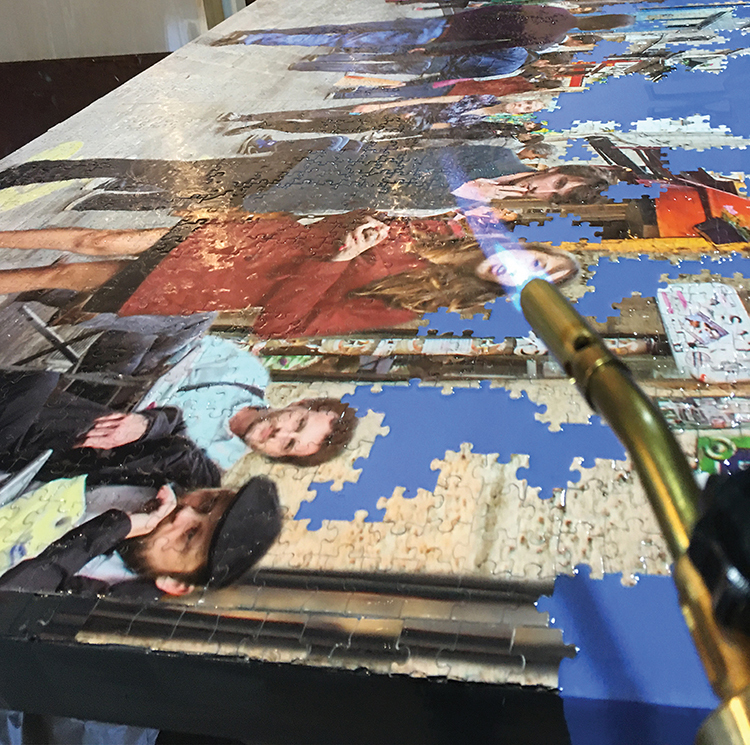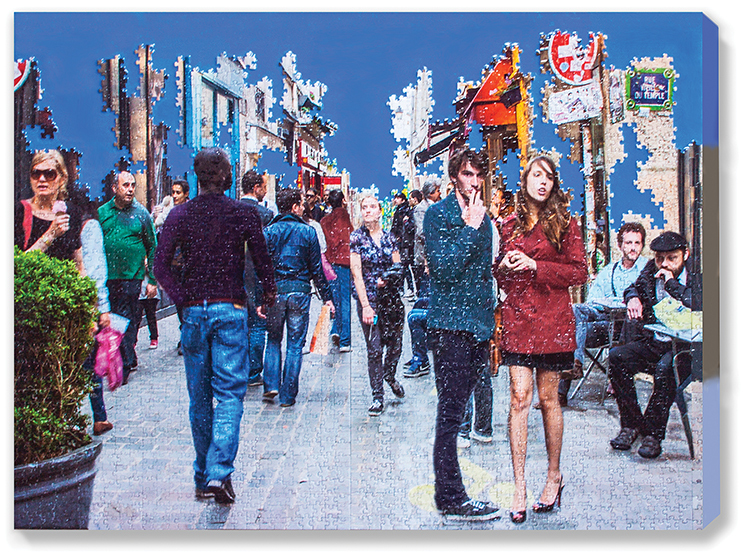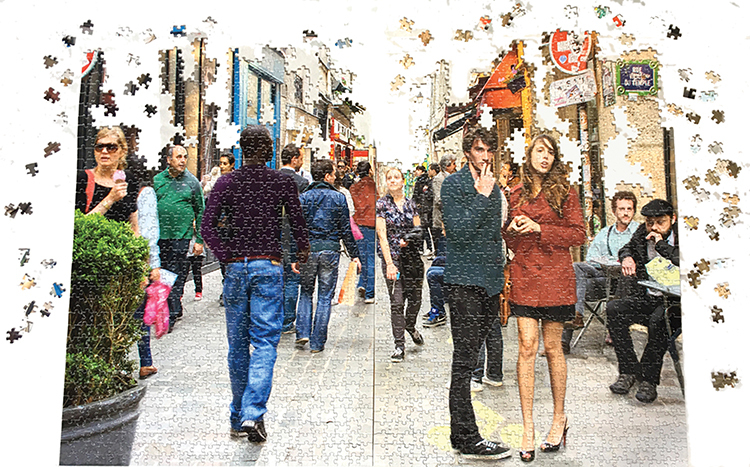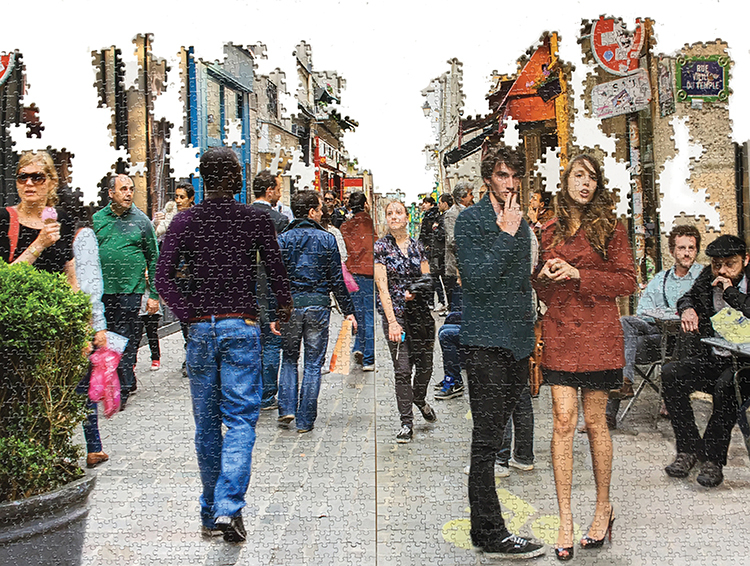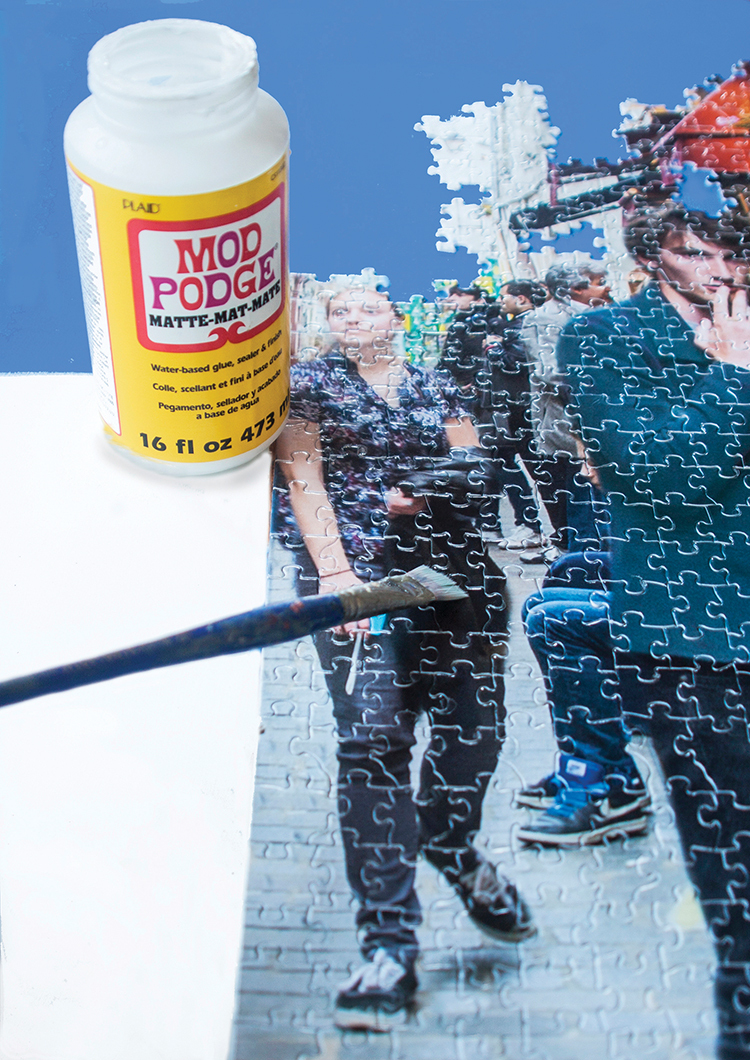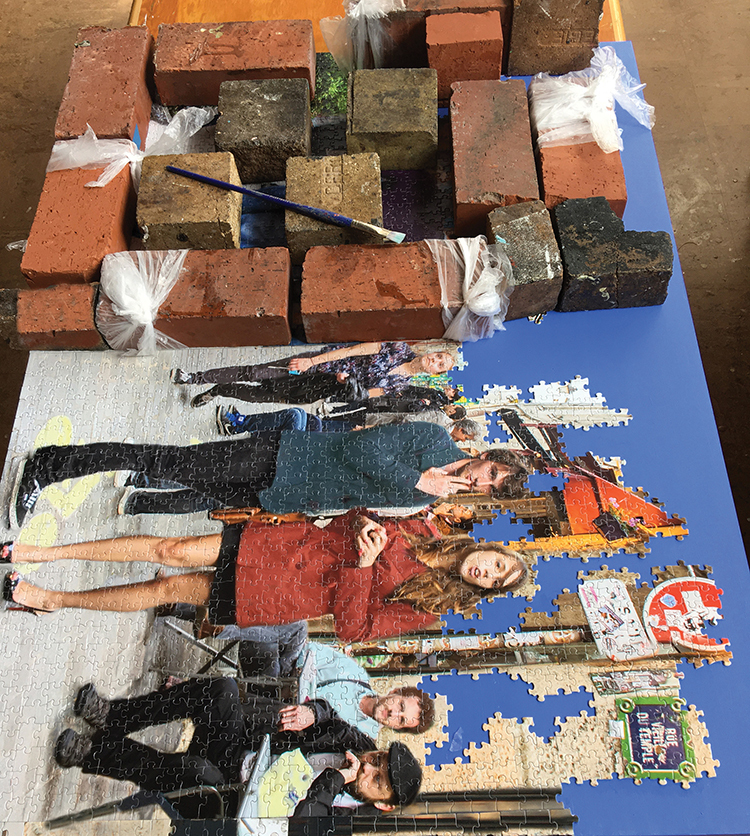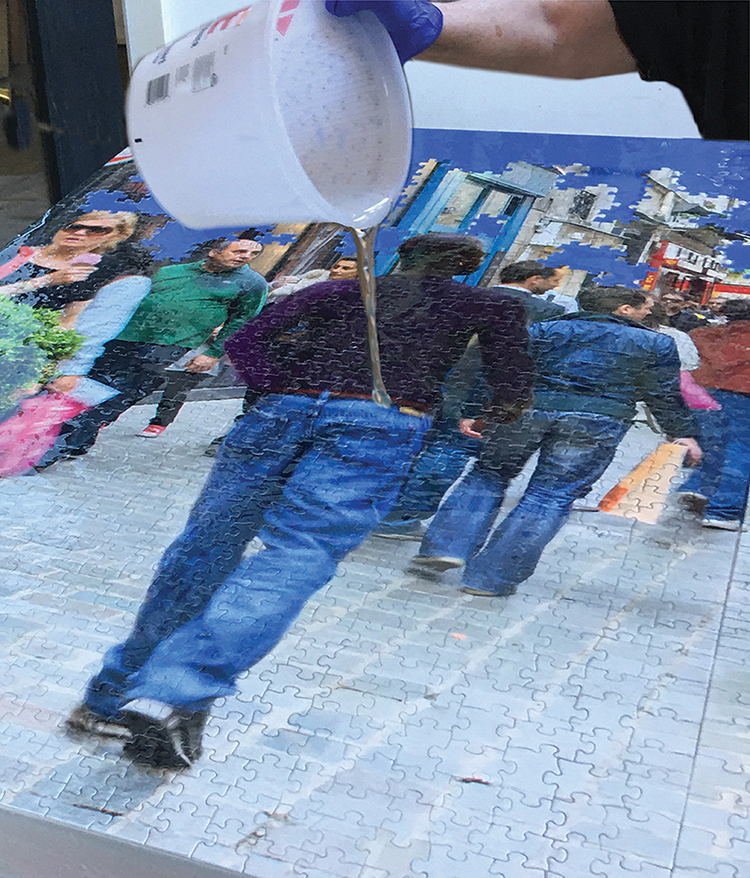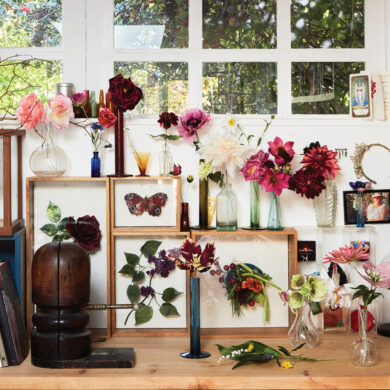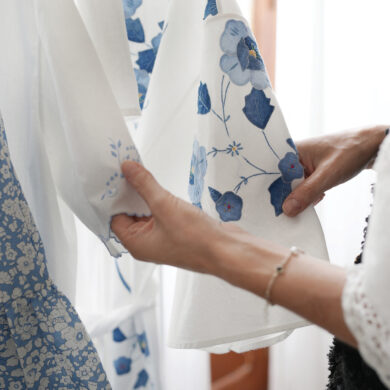My journey as an artist has had numerous twists and turns — in a good way. If you had asked me years ago where I would be in 2023, or what kind of artwork I would be making, I could never have guessed. Things just have a way of evolving on their own.
I was born and raised in Chicago, Illinois, an only child to parents who were Holocaust survivors from Poland. Art was not an important element to them, but inadvertently they both were instrumental in my early interest in art
My dad was a tailor so there were always scraps of fabric laying around that I would cut up and create things with; and my mother worked for a company that made the little colored squares glued on paint store brochures. She would bring home extra ones, which developed my interest in colors early on. I was probably the only 6-year-old who knew what aubergine or chartreuse looked like.
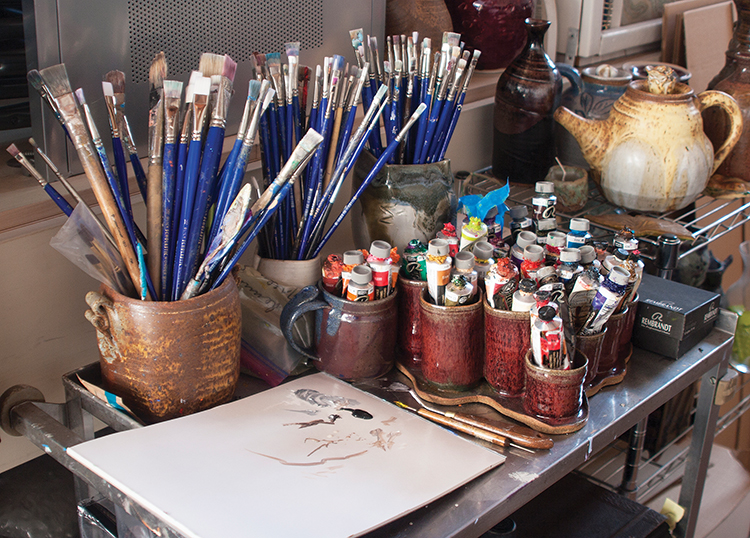
I was enrolled in Saturday kids classes at the Art Institute of Chicago and that probably had the biggest impact on my love of art. The Art Institute opened to the public at 10 a.m., but the classes started at 9 a.m., so the guards would let us kids in whenever we arrived — and I was always the first one there. I got to walk through the entire Art Institute by myself in the semi-darkness because the lights weren’t all on, and the air was cool since the heat wasn’t on yet, and I was surrounded by all these amazing paintings and sculptures. It was magical. Can you imagine nowadays letting kids walk through a museum alone before it opened? I was really lucky to have such an experience every Saturday morning.
By the time I got to college my parents wanted me to study something where I could get a job, so I majored in sociology at Indiana University in Bloomington. I found sociology interesting, but my heart wasn’t really into working in that field. I had no idea what I wanted to do until my senior year. I had time to take a ceramics class and that literally changed my life. I knew then and there I was never going into sociology. I was hooked on ceramics.
After graduating, I opened a ceramic shop and studio in Chicago with a business partner under the Morse Avenue elevated train tracks. It was a wonderful experience for four years — until I heard something telling me I needed to teach ceramics.
This itself was a magical experience, as I was driving home from the shop one afternoon on the Outer Drive in Chicago and I heard a voice from somewhere telling me to go back to graduate school. I cannot to this day explain where this voice came from, but I knew I had to follow the direction. I went back to school and got my MFA at the Newcomb Art Department at Tulane University in New Orleans, so I could teach college-level ceramics.
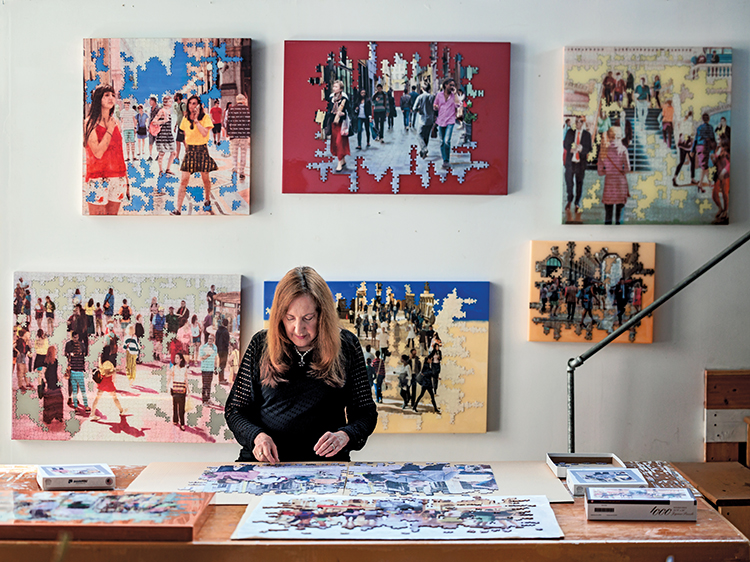
I moved around for the next several years, following teaching jobs at the University of Wisconsin, Milwaukee, San Diego State University, Chico State, and finally ended up in Oakland, California, teaching ceramics at Laney College for 30 years. Although I loved teaching ceramics, my own work gradually evolved into photography and mixed media painting around 2000.
Never in a million years did I think I would leave ceramics, but things have a funny way of happening. For a number of years, I had been working on a series of two-dimensional clay wall sculptures that I would hammer apart into many small pieces and reassemble much like a jigsaw puzzle, epoxying the pieces onto wooden boards.
One day I was distracted and stepped away in the middle of doing this, and by the time I got back, some of the pieces had shifted and the epoxy had hardened enough so that I couldn’t fit the rest of the pieces in — and I was only half done. Not wanting to waste the part already finished, I decided to paint the rest of the board with oils, and a new direction was born. Sometimes, a mistake or an unforeseen accident leads to a whole new idea.
I started leaving out more and more clay pieces until the board was just paint. Simultaneously, I also began exploring photography and Photoshop on the computer and started to incorporate those images into my work.
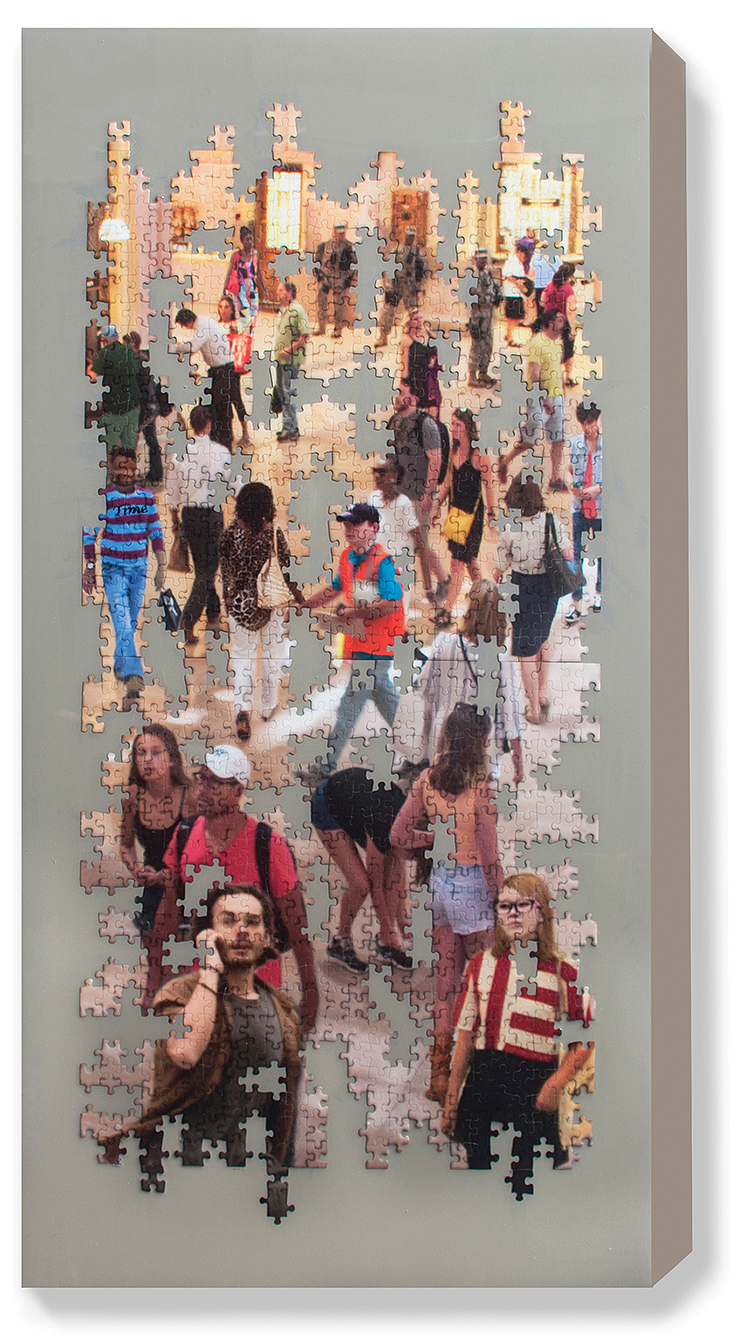
At that time, my husband, poet and novelist Jerry Ratch, and I were living in the Emeryville Artists’ Cooperative in Emeryville, California, in a wonderful studio that had skylights but no windows. Needing more air circulation and light since I was now painting with oil, we left the co-op and bought the former Rockridge Woman’s Club in Oakland. In its heyday in the 1930s, the club had 300 members, but over the years that dwindled down to only half a dozen when we bought it. We converted it to a live/work space where we still are today — 22 years later.
Currently, I have two ongoing series. Identity and Perception combines my photo images with oil, narrative text and resin surface on wood panels, and deals with issues of how we are as individuals within crowds, often experiencing loneliness, alienation, loss of identity, memories, etc.
My Missing Pieces of the Puzzle series began during COVID, when Jerry and I stopped going out much and got hooked on doing commercial jigsaw puzzles. I noticed that the puzzles often looked more interesting when they were only half done with pieces missing, which gave me the idea to have my own photos made into puzzles.
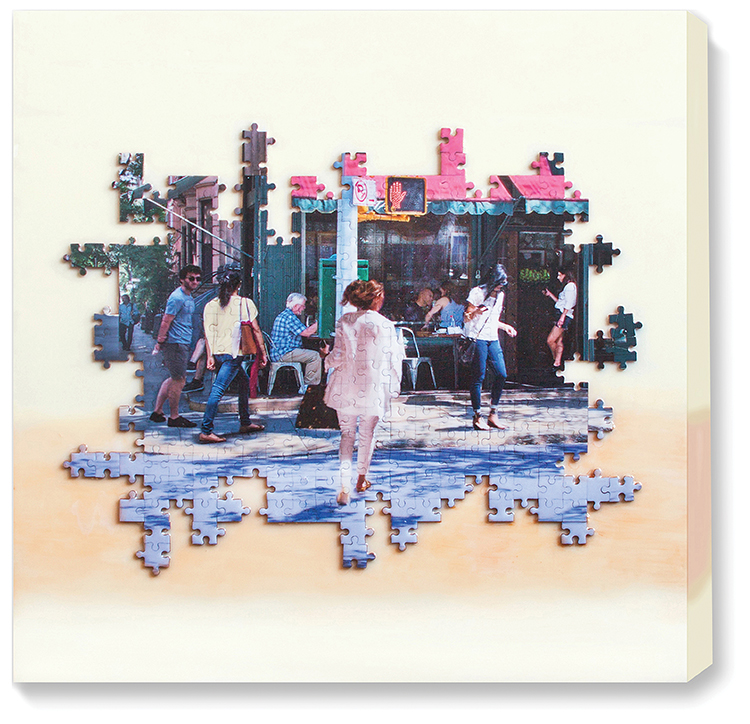
People are often searching for things in life they have missed. Since the pandemic, people have missed opportunities — missed seeing family and friends, traveling, eating in restaurants, etc. It has been a universal missing of things that were once familiar and ordinary that we just took for granted.
I leave out some sections of the puzzle when putting it together, and paint the negative spaces with oils. The left-out pieces in my work represent our search for the missing pieces in our lives, or in the world, and the realization that not everything can be found and replaced. This series conveys our need to find the acceptance and serenity in what is not there, and the hopefulness that the missing parts could be open spaces for something new to enter the picture.
I will explain exactly how these works are created: I begin by putting together numerous photos I have taken and use Photoshop to seamlessly combine them into one image. I then send the image to various companies I use that make custom puzzles, in the U.S., China, and even Bratislava, and get them back in a box of 1000 pieces.
I have to admit that my husband puts the puzzles together, since that is the hobby he enjoys most, while I am coming up with new images and working on the next part of this multistep process. I spend hours deciding which pieces to take out and what to leave in, which is much harder than it seems.
Once I have decided this, I coat the front and back with a thin layer of Mod Podge to hold it all together for easier handling. Smaller puzzles are made in one piece while larger ones are done with two halves.
I test different colors for the background and paint the wood panel with oil paint about a week before gluing the puzzle onto it, giving the paint a chance to dry well. I only paint the sections of the panel that are visible, not where the puzzle will be placed. The puzzle is then glued to the board using Elmer’s glue, with bricks placed on top to seal it down firmly.
After another week of letting all of this dry completely, I do a resin pour over the entire surface and use a propane torch to get rid of any bubbles that appear. Resin pours can be tricky and I recommend watching YouTube demonstrations, which is how I learned to do it. This is very important: Be sure to wear a face mask, goggles, rubber gloves and long sleeves so that no resin touches your skin, and nothing is accidentally inhaled or gets into your eyes. I usually do two or three resin pours several days apart in order to get a nice even surface.
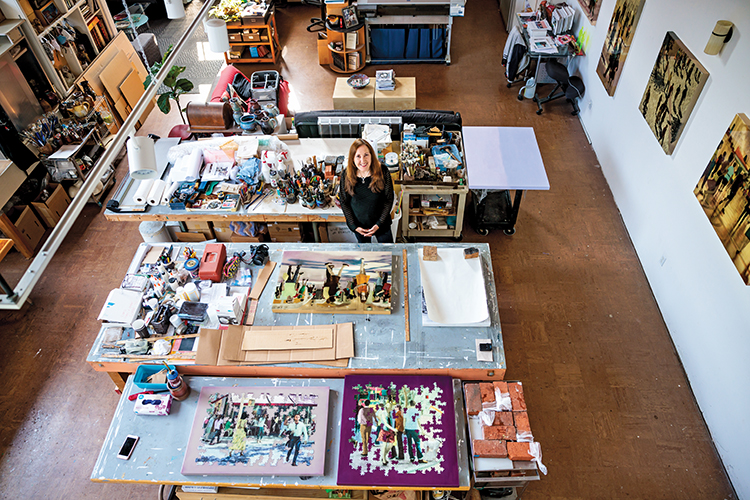
What I find especially interesting, or perhaps coincidental, is that my work has come full circle from earlier ceramic wall sculptures, that I hammered apart and reconstructed onto panels much like jigsaw puzzles, and my current work, which is similar in concept, but uses totally different materials — actual jigsaw puzzles!
My journey as an artist has had numerous twists and turns — in a good way. If you had asked me years ago where I would be in 2023, or what kind of artwork I would be making, I could never have guessed. Things just have a way of evolving on their own.
I was born and raised in Chicago, Illinois, an only child to parents who were Holocaust survivors from Poland. Art was not an important element to them, but inadvertently they both were instrumental in my early interest in art
My dad was a tailor so there were always scraps of fabric laying around that I would cut up and create things with; and my mother worked for a company that made the little colored squares glued on paint store brochures. She would bring home extra ones, which developed my interest in colors early on. I was probably the only 6-year-old who knew what aubergine or chartreuse looked like.

I was enrolled in Saturday kids classes at the Art Institute of Chicago and that probably had the biggest impact on my love of art. The Art Institute opened to the public at 10 a.m., but the classes started at 9 a.m., so the guards would let us kids in whenever we arrived — and I was always the first one there. I got to walk through the entire Art Institute by myself in the semi-darkness because the lights weren’t all on, and the air was cool since the heat wasn’t on yet, and I was surrounded by all these amazing paintings and sculptures. It was magical. Can you imagine nowadays letting kids walk through a museum alone before it opened? I was really lucky to have such an experience every Saturday morning.
By the time I got to college my parents wanted me to study something where I could get a job, so I majored in sociology at Indiana University in Bloomington. I found sociology interesting, but my heart wasn’t really into working in that field. I had no idea what I wanted to do until my senior year. I had time to take a ceramics class and that literally changed my life. I knew then and there I was never going into sociology. I was hooked on ceramics.
After graduating, I opened a ceramic shop and studio in Chicago with a business partner under the Morse Avenue elevated train tracks. It was a wonderful experience for four years — until I heard something telling me I needed to teach ceramics.
This itself was a magical experience, as I was driving home from the shop one afternoon on the Outer Drive in Chicago and I heard a voice from somewhere telling me to go back to graduate school. I cannot to this day explain where this voice came from, but I knew I had to follow the direction. I went back to school and got my MFA at the Newcomb Art Department at Tulane University in New Orleans, so I could teach college-level ceramics.

I moved around for the next several years, following teaching jobs at the University of Wisconsin, Milwaukee, San Diego State University, Chico State, and finally ended up in Oakland, California, teaching ceramics at Laney College for 30 years. Although I loved teaching ceramics, my own work gradually evolved into photography and mixed media painting around 2000.
Never in a million years did I think I would leave ceramics, but things have a funny way of happening. For a number of years, I had been working on a series of two-dimensional clay wall sculptures that I would hammer apart into many small pieces and reassemble much like a jigsaw puzzle, epoxying the pieces onto wooden boards.
One day I was distracted and stepped away in the middle of doing this, and by the time I got back, some of the pieces had shifted and the epoxy had hardened enough so that I couldn’t fit the rest of the pieces in — and I was only half done. Not wanting to waste the part already finished, I decided to paint the rest of the board with oils, and a new direction was born. Sometimes, a mistake or an unforeseen accident leads to a whole new idea.
I started leaving out more and more clay pieces until the board was just paint. Simultaneously, I also began exploring photography and Photoshop on the computer and started to incorporate those images into my work.

At that time, my husband, poet and novelist Jerry Ratch, and I were living in the Emeryville Artists’ Cooperative in Emeryville, California, in a wonderful studio that had skylights but no windows. Needing more air circulation and light since I was now painting with oil, we left the co-op and bought the former Rockridge Woman’s Club in Oakland. In its heyday in the 1930s, the club had 300 members, but over the years that dwindled down to only half a dozen when we bought it. We converted it to a live/work space where we still are today — 22 years later.
Currently, I have two ongoing series. Identity and Perception combines my photo images with oil, narrative text and resin surface on wood panels, and deals with issues of how we are as individuals within crowds, often experiencing loneliness, alienation, loss of identity, memories, etc.
My Missing Pieces of the Puzzle series began during COVID, when Jerry and I stopped going out much and got hooked on doing commercial jigsaw puzzles. I noticed that the puzzles often looked more interesting when they were only half done with pieces missing, which gave me the idea to have my own photos made into puzzles.

People are often searching for things in life they have missed. Since the pandemic, people have missed opportunities — missed seeing family and friends, traveling, eating in restaurants, etc. It has been a universal missing of things that were once familiar and ordinary that we just took for granted.
I leave out some sections of the puzzle when putting it together, and paint the negative spaces with oils. The left-out pieces in my work represent our search for the missing pieces in our lives, or in the world, and the realization that not everything can be found and replaced. This series conveys our need to find the acceptance and serenity in what is not there, and the hopefulness that the missing parts could be open spaces for something new to enter the picture.
I will explain exactly how these works are created: I begin by putting together numerous photos I have taken and use Photoshop to seamlessly combine them into one image. I then send the image to various companies I use that make custom puzzles, in the U.S., China, and even Bratislava, and get them back in a box of 1000 pieces.
I have to admit that my husband puts the puzzles together, since that is the hobby he enjoys most, while I am coming up with new images and working on the next part of this multistep process. I spend hours deciding which pieces to take out and what to leave in, which is much harder than it seems.
Once I have decided this, I coat the front and back with a thin layer of Mod Podge to hold it all together for easier handling. Smaller puzzles are made in one piece while larger ones are done with two halves.
I test different colors for the background and paint the wood panel with oil paint about a week before gluing the puzzle onto it, giving the paint a chance to dry well. I only paint the sections of the panel that are visible, not where the puzzle will be placed. The puzzle is then glued to the board using Elmer’s glue, with bricks placed on top to seal it down firmly.
After another week of letting all of this dry completely, I do a resin pour over the entire surface and use a propane torch to get rid of any bubbles that appear. Resin pours can be tricky and I recommend watching YouTube demonstrations, which is how I learned to do it. This is very important: Be sure to wear a face mask, goggles, rubber gloves and long sleeves so that no resin touches your skin, and nothing is accidentally inhaled or gets into your eyes. I usually do two or three resin pours several days apart in order to get a nice even surface.

What I find especially interesting, or perhaps coincidental, is that my work has come full circle from earlier ceramic wall sculptures, that I hammered apart and reconstructed onto panels much like jigsaw puzzles, and my current work, which is similar in concept, but uses totally different materials — actual jigsaw puzzles!






